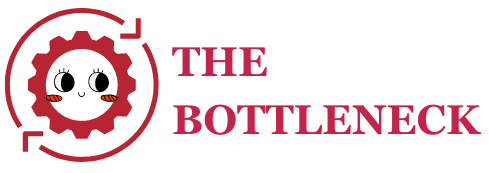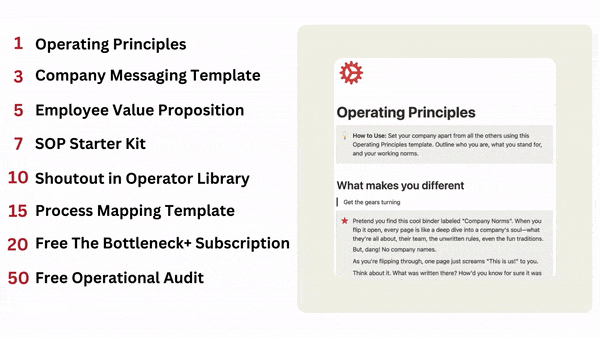
👋 Hey there! Today's post was created in partnership with Attio. This is part of my sponsored program where I speak to operators of high growth companies to find out what tactics they used to scale their business.
I had the chance to chat with the Attio team about how they optimized their sales funnel to double conversions… using their own product (!).

Read Time: 13.1 Minutes
Happy Sunday Operators ⚙️
You know me. I love talking about operations. I’m a business nerd to the core.
So I'm always searching for unique tactics to improve a business's workflow. That's when I stumbled upon Attio.
Attio is pulling the CRM industry into the age of AI.
Attio's strategy is to offer users a CRM that combines a robust data model, an automation + AI engine, along with the user experience of Linear, Notion, or Airtable.
Their strategy seems to be paying off.
Even before Attio’s public launch in March 2023, they had already surpassed $1 million in annual recurring revenue (ARR). Since then, their customer base has skyrocketed to over 10,000 clients. And they've raised some serious cash — $23.5m in a Series A led by Alex Bard from Redpoint, a former Salesforce star exec.
As I dug into their website, I wondered if the Attio team used their own CRM product to handle their internal operations. So I reached out.
The Attio team confirmed that they are using their own product to handle every aspect of the business, including:
Sales (deal tracking, pipeline management)
Customer success management
Tracking Product Qualified Leads (PQLs)
Hiring
Reporting
What I found most impressive was how they handled their RevOps funnel. The Attio team handles thousands of leads with only 2 sales reps. But how you ask?
It's your lucky day. I got an exclusive look at how Attio has set up their system. At the bottom of this email, I’ll give you step-by-step instructions on how to set this up yourself in Attio.

Setting the Stage
How Attio Handles Thousands of Leads with 2 Sales Reps
You've finally hit product-market fit. Everyone is signing up for your free reverse trial. Your marketing team has done too good of a job, and your lead volume has doubled in one year.
You're scrambling to keep up, but your manual workflows aren't cutting it anymore. You've got two sales reps working around the clock, but they're spending more time entering data than closing deals.
Sounds like a nightmare?
(Here’s a live look at me when I have to do any manual work)
That's the situation Attio found themselves in. But instead of throwing in the towel, they decided to take matters into their own hands – literally.
Attio used its own CRM product to power its RevOps efforts.
You're probably wondering what makes Attio’s CRM system so different from Salesforce, Hubspot, and others.
Attio differentiates itself from Salesforce, Hubspot, and other CRMs in three ways:
Get value in under 2 minutes: Attio is built as a "day 0" product. Just like you'd download Slack, Gmail, and Notion when starting a company, Attio is designed to help you build your CRM fast. Its intuitive interface mirrors Linear and Notion. You can start for free (Check out their pricing page below)
Custom built-in automation: Old-school CRMs force you to use their rigid structures. With Attio, you can build custom workflows from pre-built templates or the ground up. All on a beautiful drag-and-drop canvas. Once you've built your flow, Attio offers integrations with your tech stack like Slack to make sure all your tools are connected
Attio AI: Attio's AI capabilities allow a person to automate tasks that require a human touch. You can now classify texts, summarize information, and create your prompts within the product.
Every operator dreams of having a “too many leads” problem. What most don’t think through is what to do once you have those leads.
How do you optimize your customer funnel to convert as many people as possible?
By using their powerful automation engine, Attio solved this problem.
Ops Tactic: Increase your sales conversions by incorporating custom automations into your workflows
Why this Matters
GTM motions are harder to execute these days
The biggest plus point to a subscription business model is the assumption that revenue will be predictable.
Managing pipelines and forecasts should be more straightforward and less human dependent. With the right enablement, technology, and support, one should be able to drive improved predictability.

Gif by snl on Giphy
Per Gartner, less than 50% of sales leaders and sellers have high confidence in forecasting accuracy.
The mix of outbound, inbound, product-led, marketing-led, sales-led motions, etc., combined with the increasing complexity of buyer journeys has made it even more challenging to drive predictability.
So what to do?
Most stitch together a team to focus on building out their sales funnel.
Poorly run growth teams find coordinating processes, systems, and incentives challenging across the funnel. This leads to a leaky funnel problem.
A well-run funnel typically involves:
A marketing motion at the top
Combined marketing and SDR motion in the middle
A sales motion at the bottom.
An easier way to think about this is to imagine you have a basket of apples. Of course, you only want the best apples. An optimized funnel helps ensure the marketing and sales teams know exactly what a "great apple" looks like.
When building your funnel, you should set up rules to ensure only the best leads get passed to the sales team. This way, the team can focus on the most likely to buy leads. Managing your pipeline forces you to look at different opportunities to convert customers.
By focusing on accelerating the speed at which leads move through the pipeline, you can have your sales team avoid wasting time on manual tasks.
It is not only managing the sales pipeline that is important to predictability but also looking at the entire funnel holistically across the top, middle, and bottom.
Besides, if you bump your conversion rates by a few percent… you can add millions in enterprise value. Who wouldn’t want that?

The Blueprint
Attio’s Head of Growth, Alex Vale, focuses on when a customer creates a workspace within their account. That's the lifeblood of their sales motion.
Per Alex,
It's not about leads clicking "talk to sales" or anything like that. 99% of our leads are coming through people making workspaces and us reaching out to them after they've shown intent in the product.
The Attio team was kind enough to show The Bottleneck team a few processes they use to handle their sales funnel. These flows help them handle thousands of leads with only 2 sales reps.
These are 3 different workflows the Attio team uses to make their RevOps run smoothly.
Categorizing new leads
What do you do when a new lead enters your funnel?
In the past, I would have to:
Remind a sales rep to categorize the lead manually (and hope they choose the right group)
Hire a Hubspot specialist (and rehire them when the flow inevitably broke)
Pray that I remember to action the new lead. (Which you and I know I don’t have time for)
With Attio, that problem shouldn’t exist anymore. With this first automation, the product can automatically categorize new leads based on your definitions.
Here's how Attio does it in their RevOps funnel:
The first automation is triggered when a new workspace is created. The flow is:
Workspace is created
A time delay to ensure the enrichment data of the lead is complete
Filter for only customer workspaces
Once a lead reaches that final step, you get to a branch that sorts the lead into the right bucket based on industry.
Attio primarily serves early-stage startups.
When filtering for their ideal customer profile (ICP), Attio defines its ideal customer industry and estimated annual revenue. Annual revenue is another enrichment point that Attio automatically provides.
Attio has a bucket to catch any workspace without a company attached to ensure no lead falls through the cracks.
The key thing with these branches is that each lead is defined with the correct grouping.
Once the lead is categorized, they are automatically put into a Marketing Qualified List (MQL) or sent to Slack for triage. The definition of an MQL is a potential customer who has shown interest and has been reviewed by the team.
Slack-based manual lead triage
No categorization system is perfect.
But don’t worry if a lead doesn’t get categorized by the system. This is where Attio's sales reps jump in. These uncategorized leads get sent to a Slack channel. Attio then has their two sales reps handle the uncategorized leads in 10-15 minutes daily.
In the image below, you can see where there are new uncategorized workspaces.
The team then digs into what category the business might be.
Sometimes, Attio gets companies that come through that don't fit their preferred categories but still want to talk to them.
The sales team will review these Slack messages one by one to determine how to classify the lead.
Both sales reps will look for any information online to determine how to categorize the business.
Once the sales rep has determined the category, they click the correct button. The rest of the process is done automatically.
From MQL to Closing Leads
After categorizing the leads, we finally get to the fun part - wheeling, dealing, and making money!
Once all the leads are categorized automatically or by a sales rep, the lead ends up as an MQL.
The lead will get added to a second Slack channel. The channel will present three options:
Which sales rep should be assigned to this deal?
Do you want to say they're unqualified and they shouldn't be in the pipeline
Or is this a duplicate?
These automated workflows allow the sales team to focus only on their calls and selling and not have to maintain this pipeline.
Let's say after all of this, Attio loses the deal...
Attio can automatically categorize the loss reason once a sales rep inputs the loss reason in plain text.
An example could be "Didn't close because the customer decided to go with a competitor."
That allows the sales team to record a clear description of why that deal didn't close. Then, they use AI to classify that text.
Attio uses 6 categories to understand why they lose deals. With this information, they can determine the root cause of why they are losing out on potential revenue.
With these workflows, Attio has scaled its business to millions efficiently, quickly, and smoothly.
As an operator, that sounds like music to my ears.

Explore Further

CRM’s are flexible by nature
The flexibility of a CRM is the tool's great (and bad) part! This article does a great job breaking down who can use a CRM and what you can do with one

How Startups Attack Salesforce
Salesforce has been around for decades. So there have been multiple attempts to take them out. There are 4 moves companies use to take on Salesforce.

Meet the founder of Attio
Here’s a 45-minute interview with the founder in Attio’s earlier days. They walk through building a few workflows, remote working and more.

Spread The Word
Share The Bottleneck with friends to get a few freebies. Maybe you’ll make some new friends along the way 😆
We’ll give you free stuff and more friends if you share a link. Only one link.

{{rp_personalized_text}}

What did you think of today's tips?
as

